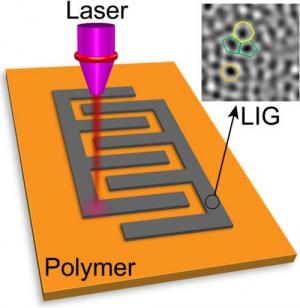Graphene and ruthenium mixture creates durable catalyst for fuel cells
Rice University scientists have attached ruthenium atoms to graphene to create a durable catalyst for high-performance fuel cells. Most catalysts used to drive the oxygen reduction reaction that lets fuel cells turn chemical energy into electricity are made of platinum, which stands up to the acidic nature of the cell’s charge-carrying electrolyte. However, platinum is expensive, and replacements have long been searched for by researchers.

The ruthenium-graphene combination may pose a suitable replacement; In tests, its performance was said to easily match that of traditional platinum-based alloys and bested iron and nitrogen-doped graphene, another contender.






